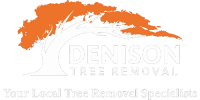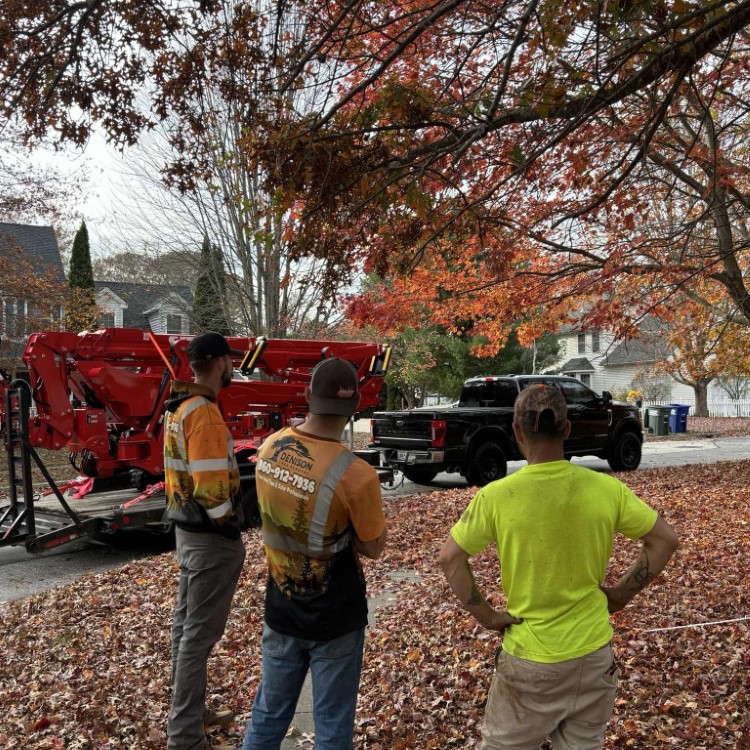In Ledyard, CT, and surrounding areas like Preston, Waterford, Stonington, and East Lyme, trees provide beauty, shade, and environmental benefits. However, not all trees are safe to keep. Some may become hazards due to disease, damage, or structural instability. Knowing when a tree poses a danger and when removal is necessary is crucial for property safety and maintaining a healthy landscape.
Key Takeaway: Identifying hazardous trees early can prevent property damage and personal injury. Understanding the signs of tree instability ensures a safe environment and helps you determine whether professional tree removal is necessary.
Signs of a Dangerous Tree
Visible Decay and Structural Weakness
Decay is a major indicator that a tree may be hazardous. Fungal growth, such as mushrooms at the base of the tree, often signifies internal rot. Large cavities in the trunk or branches suggest a weakened structure. A decaying tree is more likely to break or fall, especially during strong winds or storms. Consulting an arborist can help assess the tree’s structural integrity.
Leaning Trees and Root Issues
A tree that suddenly starts leaning is a red flag. While some trees naturally grow at an angle, a recent or increasing lean may indicate root damage or instability. Exposed or damaged roots, often caused by construction or soil erosion, compromise the tree’s ability to stay upright. In such cases, tree removal in Preston, CT or Waterford, CT may be necessary to prevent potential hazards.
Dead Branches and Canopy Thinning
When branches start dying off, especially in the upper canopy, it could indicate a serious issue with the tree’s health. This is often caused by disease, insufficient nutrients, or pest infestations such as woodboring beetles. A tree with excessive deadwood poses a risk of falling branches, which can cause damage to structures and endanger people below.
Environmental Factors Affecting Tree Stability
Soil Conditions and Drainage Problems
Poor soil conditions can negatively impact a tree’s stability. Trees need nutrient-rich soil and proper drainage to thrive. Compacted or eroded soil weakens root support, making the tree more susceptible to toppling. Conducting a soil test can help determine if the tree has access to essential nutrients and adequate aeration.
Storm Damage and Extreme Weather
Storms are a common cause of tree instability in Stonington, CT and East Lyme, CT. High winds, heavy snowfall, and lightning strikes can weaken tree structures. Inspecting trees after storms can reveal cracks, broken limbs, or uprooting that may require immediate attention.
Pest Infestations and Disease
Pests such as woodboring beetles and diseases like root rot compromise tree health. Signs of infestation include sawdust-like material at the base, holes in the bark, or leaf discoloration. If a tree shows severe infestation symptoms, professional tree trimming or removal may be required to prevent spreading.
When Tree Removal is Necessary
Proximity to Structures and Power Lines
Trees growing too close to homes, garages, or power lines can become hazards. Overhanging branches pose a risk of falling during storms. In cases where trimming is insufficient, tree removal in Waterford, CT or other nearby areas may be the safest option.
Large Cracks and Splits
Large vertical cracks in the trunk can indicate internal structural failure. Trees with major splits are at high risk of breaking apart, especially in severe weather. If the damage is extensive, removing the tree can prevent unexpected accidents.
Declining Health Despite Care
Even with proper care, some trees decline due to age, disease, or environmental factors. If a tree continues to deteriorate despite treatment, removal might be the best solution. Professional assessment by a certified arborist can help determine whether the tree is salvageable or if removal is the safest course of action.
Answering Common Questions
How do I know if my tree needs removal or just trimming? A tree with minor damage or dead branches may only need trimming. However, if it has severe decay, root damage, or poses a risk to structures, removal is the better option. Tree trimming services in East Lyme, CT can help determine the best course of action.
Can I remove a tree myself, or should I hire a professional? Tree removal is dangerous and should be handled by professionals with the right equipment and expertise. Hiring a tree removal expert in Stonington, CT ensures safety and prevents damage to surrounding property.
What happens after a tree is removed? After tree removal, the remaining stump may need to be addressed. Options include grinding or stump removal in Preston, CT to prevent regrowth and maintain a clear landscape.
Importance of Professional Tree Services
Professional tree services ensure the health and safety of your landscape. Whether you need trimming, removal, or emergency services, working with experienced professionals guarantees proper care and safe execution.
Protecting Your Landscape
Regular inspections and maintenance help identify potential tree hazards early. Implementing proper tree care techniques, such as aeration and fertilization, supports strong and healthy tree growth.
Contact Denison Tree Removal
If you suspect a tree on your property poses a risk, don’t wait until it becomes a hazard. Denison Tree Removal offers expert tree services in Ledyard, CT and surrounding areas, ensuring safety and peace of mind. Contact us today to schedule a consultation.

